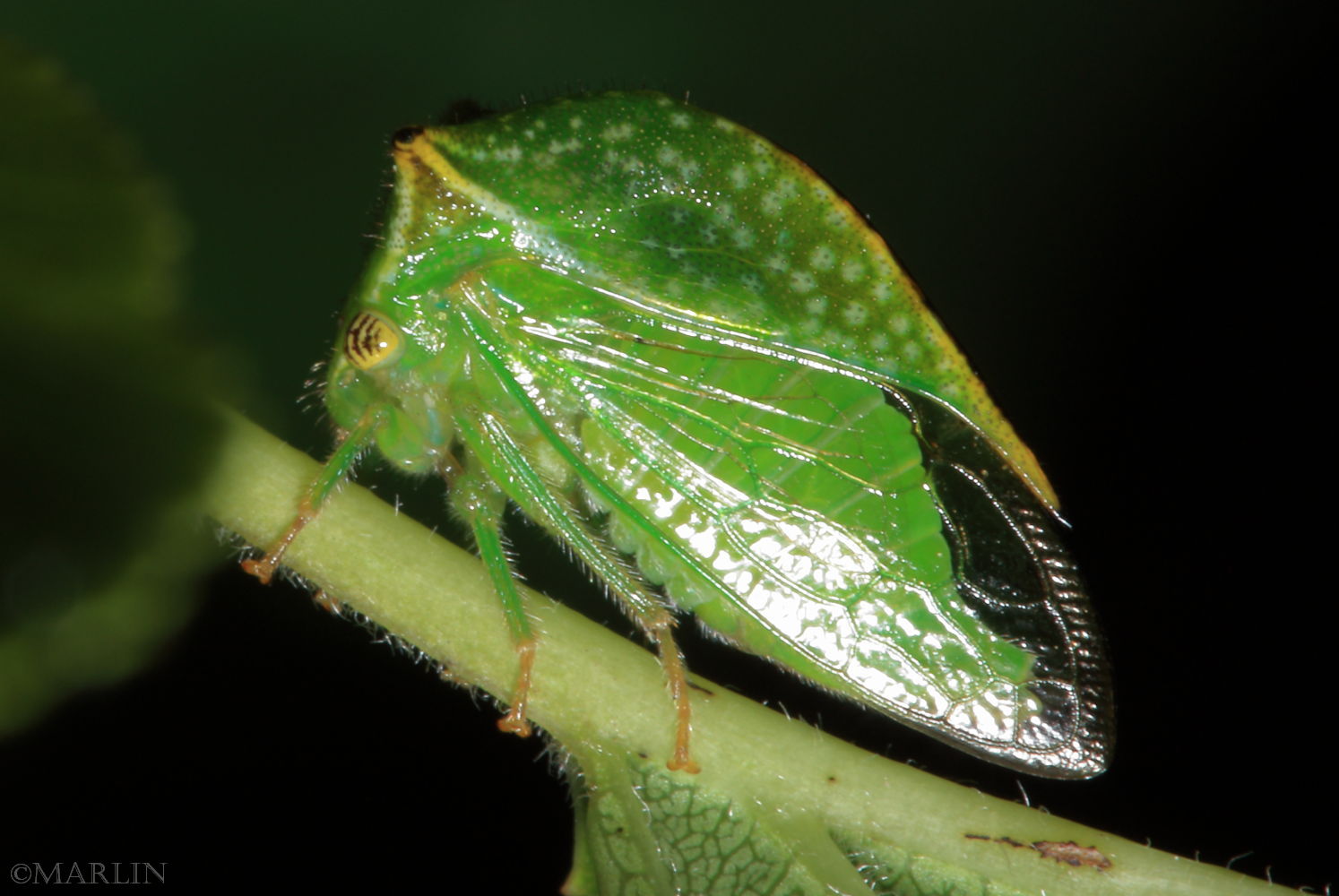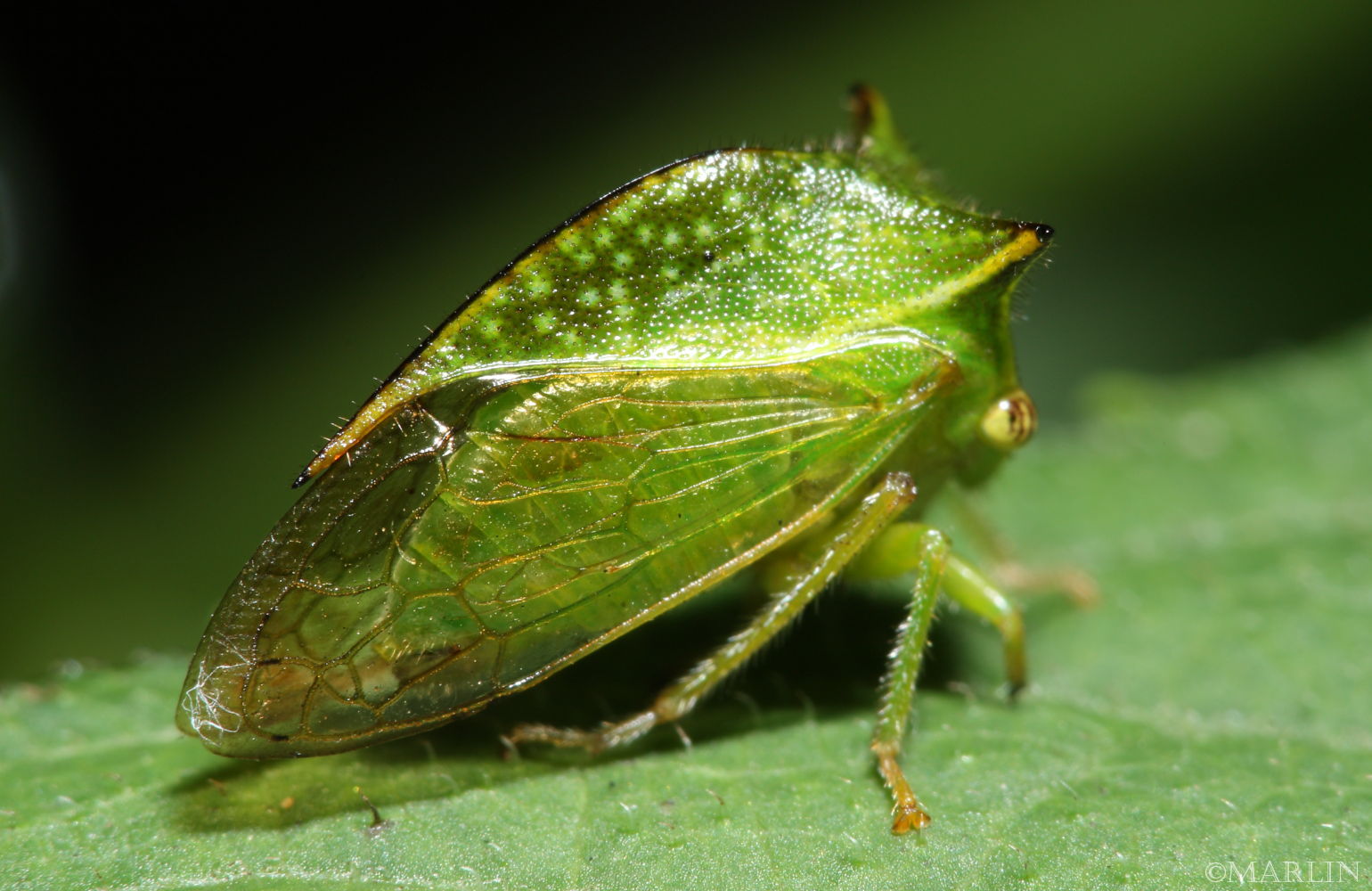Treehopper – Stictocephala taurina
New research suggests a treehopper’s “helmet” is not a wing-like appendage, as recently hypothesized.
There are approximately 3,200 described species of treehoppers worldwide, 257 of which live in North America. [2] Currently, these insects are placed in three separate families: Melizoderidae, Aetalionidae, and Membracidae. Membracidae is by far the largest and most widespread.
These insects have long attracted attention because of their bizarre forms and unusual behaviors. Many species are gregarious, forming large and often conspicuous groups of adults and immatures. Some of these are ant-mutualistic and may also exhibit presocial behavior. Most species are solitary and these are often cryptic, at least as immatures.
The species epithet taurina comes from the Latin taurus, bull – a reference to the insect’s “horns”
Individual treehoppers usually live for only a few months, but they belong to a lineage that is at least 40 million years old. The oldest undoubted treehopper fossils are specimens of a few as yet undescribed species from amber found in the Dominican Republic. [1]
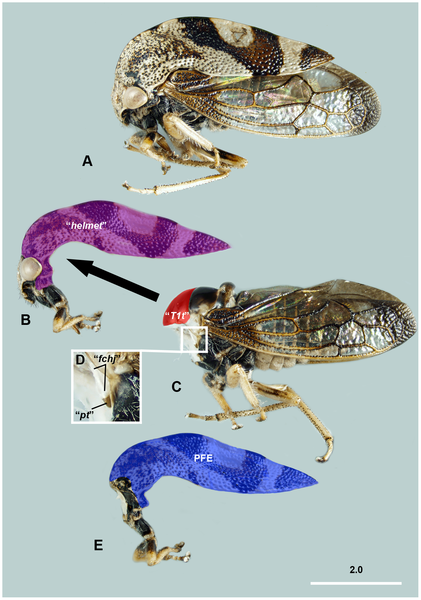
1-18-2012
New research suggests a treehopper’s “helmet” is not a wing-like appendage, as recently hypothesized.
Many treehoppers can be indentified by their distinctive prototum, which often manifests spines, bulbs, “thorns” and other bizarre structures. A spectacular hypothesis was published recently in the Journal Nature, asserting the helmet (a dorsal thoracic sclerite) of treehoppers is connected to the 1st thoracic segment (T1; prothorax) via a jointed articulation and therefore was a true appendage [4]. Furthermore, the helmet was interpreted to share multiple characteristics with wings, which in extant pterygote insects are present only on the 2nd (T2) and 3rd (T3) thoracic segments. In this context, the helmet could be considered an evolutionary novelty [3].
Although multiple lines of morphological evidence putatively supported the helmet-wing homology, the relationship of the helmet to other thoracic sclerites and muscles remained unclear. Observations of exemplar thoraces of 10 hemipteran families (table 1) reveal multiple misinterpretations relevant to the helmet-wing homology hypothesis as originally conceived: 1) the helmet actually represents T1 (excluding the fore legs); 2) the “T1 tergum†is actually the anterior dorsal area of T2; 3) the putative articulation between the helmet and T1 is actually the articulation between T1 and T2 [3].
The researchers concluded that there is no dorsal, articulated appendage on the membracid T1. Although the posterior, flattened, cuticular evagination (*PFE) of the membracid T1 does share structural and genetic attributes with wings, the PFE is actually widely distributed across Hemiptera. Hence, the presence of this structure in Membracidae is not an evolutionary novelty for this clade [3].
*PFE = Posterior flattened evagination of the pronotum
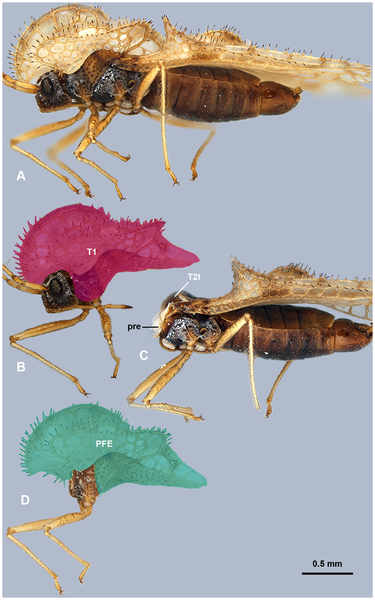
Analogous PFE in lace bugs (Tingidae) – see also below
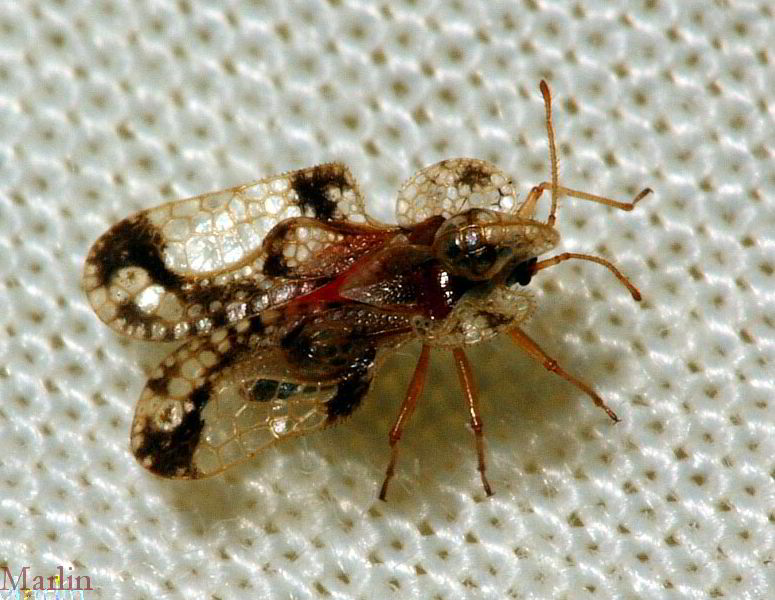
References
- C. H. Dietrich, Illinois Natural History Survey, Treehoppers (Hemiptera: Cicadomorpha: Membracoidea)
- Bugguide.net, Stictocephala taurina
- Hines HM, Deitz LL, et al. (2012) On Dorsal Prothoracic Appendages in Treehoppers and the Nature of Morphological Evidence.
- Benjamin Prudomme, Caroline Minervino, et al, “Body plan innovation in treehoppers through the evolution of an extra wing-like appendage”

